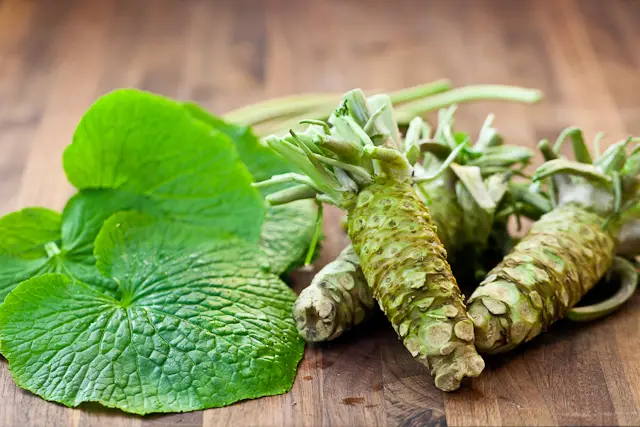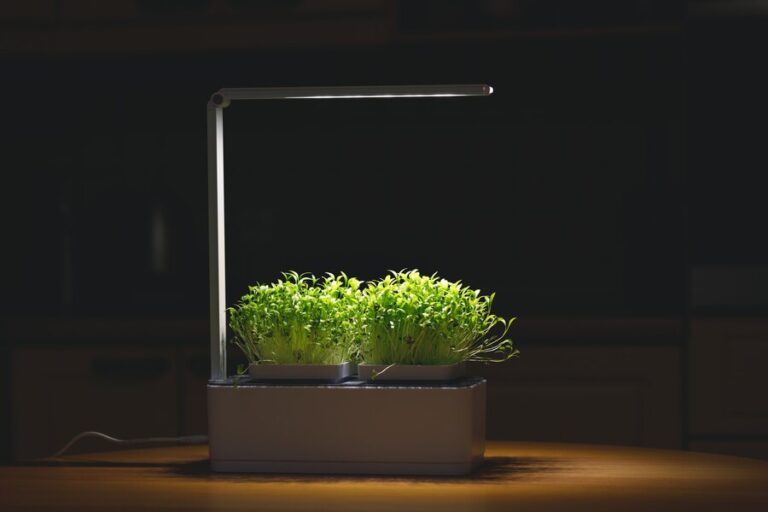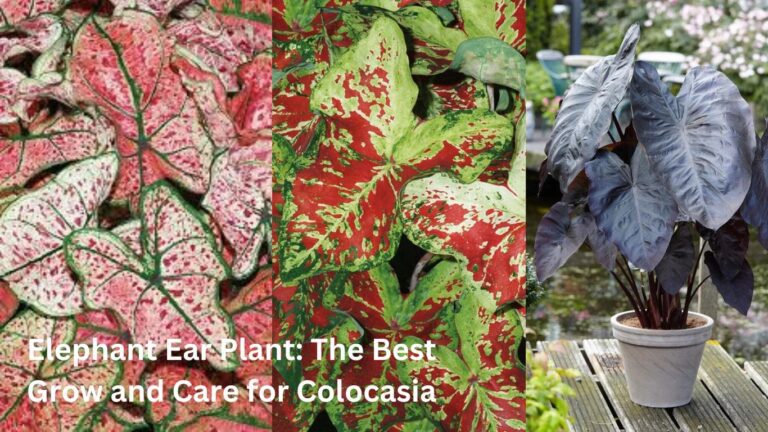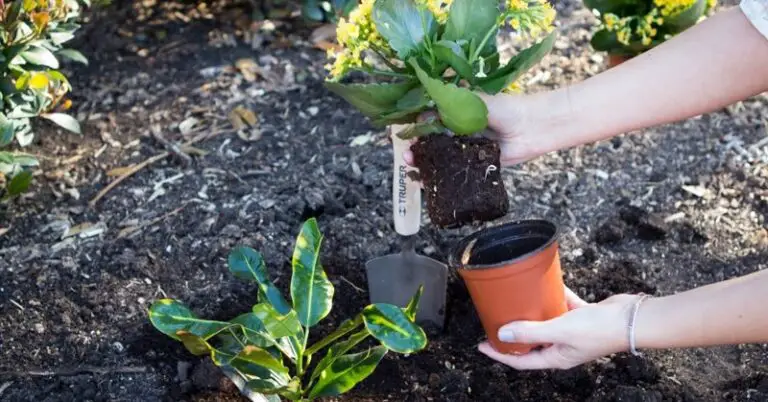Wall Planters: Ingenious & Cost-Free Designs for Extra Planting Room
Table of Contents
Types of Materials You Can Use for DIY Wall Planters
When it comes to creating DIY wall planters, the choice of materials plays a crucial role in the aesthetics, durability, and functionality of your project. One of the most popular materials for DIY wall planters is wood, which provides a warm and natural look to your vertical garden. Cedar and redwood are excellent choices due to their resistance to rot and decay, making them ideal for outdoor use. Additionally, metal materials such as galvanized steel or copper can add a modern and industrial touch to your wall planters, while also offering durability and strength to support the weight of the plants.

For a more sustainable approach, consider using recycled materials like pallet wood or old containers to repurpose into unique wall planters. Not only does this reduce waste and environmental impact, but it also adds a rustic charm to your green wall. Plastic materials, such as PVC pipes or containers, are lightweight and easy to work with, making them suitable for DIY enthusiasts looking for a budget-friendly option. These materials can be painted or decorated to match your style and design preferences, offering endless possibilities for customizing your wall planters.

Creative Ways to Upcycle Household Items into Wall Planters
Transforming everyday household items into unique wall planters is a fantastic way to add a touch of greenery to your living space while also reducing waste. One creative idea is repurposing old teacups or mugs into charming mini planters. Simply drill a small hole in the bottom for drainage, fill with soil, and plant your favorite succulent or herb for a delightful display in your kitchen or on a gallery wall. These upcycled planters not only add a whimsical touch to your decor but also showcase your commitment to sustainable living.
Another clever way to repurpose items into wall planters is to use old wooden crates or wooden pallets. These rustic items can be easily transformed into vertical gardens by attaching them to your wall and filling them with a variety of plants. Whether you choose to plant cascading vines, colorful flowers, or a mix of herbs, these repurposed planters will add a touch of natural beauty to any outdoor or indoor space. With a bit of creativity and some basic DIY skills, you can turn everyday items into stunning wall planters that breathe new life into your home decor.

How to Make a Vertical Herb Garden Using Wall Planters
Vertical herb gardens using wall planters are a popular and practical way to grow herbs in limited spaces. By utilizing vertical space, you can maximize your herb production while adding a decorative and functional element to your living space. To create a vertical herb garden using wall planters, start by selecting a sunny location with easy access to water. Choose a variety of herbs that you use frequently in your cooking, such as basil, mint, parsley, and thyme. Ensure that the wall planters have proper drainage to prevent waterlogging and root rot, and consider adding a drip irrigation system for efficient watering.
When planting your herbs in the wall planters, pay attention to their spacing and growth habits to prevent overcrowding and competition for nutrients. Mint, for example, is a vigorous spreader and should be planted in a separate container to avoid overtaking other herbs. Experiment with different arrangements and combinations of herbs to create a visually appealing and diverse vertical herb garden. Remember to regularly prune and harvest your herbs to encourage new growth and prevent them from becoming leggy or overcrowded. With proper care and maintenance, your vertical herb garden using wall planters can provide a convenient and sustainable source of fresh herbs for your culinary creations.
Innovative Hanging Wall Planter Ideas for Small Spaces
When dealing with limited space, hanging wall planters can be a game-changer for bringing greenery into small areas. Utilizing vertical space is key, and hanging wall planters allow you to create a mini vertical garden without taking up valuable floor space. Consider using macramé plant hangers to suspend planters at different heights, adding depth and visual interest to your small space.
For a modern and sleek look, opt for minimalist metal hanging wall planters that blend seamlessly with your decor. These planters can be clustered together to create a stunning focal point or spread out strategically along a bare wall to add a touch of nature to every corner of your small space. Mixing and matching different shapes and sizes of metal planters can create a dynamic and eye-catching display that is both stylish and space-saving.

Tips for Choosing the Right Plants for Your Wall Planters
When selecting plants for your wall planters, it’s essential to consider their growth habits and light requirements. Choose plants that will thrive in the amount of sunlight your chosen location receives. For sunny spots, opt for sun-loving plants like succulents, herbs, or flowering varieties. In contrast, shady areas may suit ferns, ivy, or other low-light plants. Understanding each plant’s specific needs will help ensure they flourish in your wall planters.
Additionally, think about the size of the plants in relation to your wall planter. Some plants may outgrow small containers quickly, leading to rootbound or overcrowded conditions. Select appropriately sized plants that have room to grow and spread without becoming crowded. This will not only maintain the health and aesthetics of your wall planters but also prevent the need for frequent replanting or maintenance.
The table below shows some tips for choosing the right plants for your wall planters:
| Aspect | Tips |
| Light Conditions | Consider the light when choosing plants for your living wall. Different plants need varying light levels. Some thrive in low-light situations, while others require bright sunlight. Assess the available light in the area where your wall planter will hang and select plants accordingly. |
| Low-Maintenance Plants | Opt for low-maintenance plants. These are key for a successful vertical garden. Look for varieties that don’t need frequent watering or extensive care. Succulents, such as echeverias, sedums, and hens and chicks, are excellent choices due to their striking shapes and low water requirements. |
| Diversity in Textures and Colors | Mix and match plants with different textures and colors. This creates visual interest and adds depth to your vertical garden. Consider combining plants with varying leaf shapes, sizes, and colors to create an appealing arrangement. |
| Growth Patterns | Think about how each plant grows. Some plants trail downward, while others grow upright. Choose a combination of trailing and upright plants to create a balanced and dynamic display. |
| Watering Needs | Be mindful of watering requirements. Wall planters can dry out quickly, especially if they’re exposed to sunlight or wind. Select plants that have similar water needs to simplify maintenance. |
| Soil Preferences | Different plants thrive in different soil types. Ensure that the soil mix in your wall planter suits the chosen plants. |
| Consider Seasonal Changes | Some plants may bloom or grow differently during specific seasons. Plan for seasonal variations by selecting plants that adapt well to changing conditions. |
| Allergies and Sensitivities | If you or anyone in your household has allergies or sensitivities, avoid plants that release pollen or have strong fragrances. Opt for hypoallergenic options. |
Step-by-Step Guide to Building a Living Wall Planter
Building a living wall planter can be a rewarding and eco-friendly project for any gardener. To get started, you will need a sturdy wooden frame that can support the weight of the plants and soil. Make sure to choose a location that receives adequate sunlight for the plants you plan to grow.
Next, line the frame with a breathable landscape fabric to prevent soil erosion while allowing for proper drainage. Fill the planter with a nutrient-rich soil mix suitable for the plants you have selected. Plant your chosen greenery, making sure to space them out evenly to allow room for growth. Remember to water your living wall planter regularly and monitor the moisture levels to keep your plants healthy and thriving.
Building a living wall planter is a fantastic way to maximize greenery in a small space. Whether you have a tiny balcony or a larger garden, a living wall adds character and beauty. Here’s a step-by-step guide to creating your own living wall:
| Step | Description |
| 1. Evaluate Placement Options | Consider where you want your living wall. Take into account factors like the wall’s weight capacity, sunlight exposure, and ease of removal or disposal. |
| 2. Gather Materials | Collect the necessary materials, including a modular system (such as pocket planters), fabric membranes, and an irrigation system (optional) for water distribution. |
| 3. Prepare the Wall | Clean the wall surface and ensure it’s ready for installation. |
| 4. Install the Frame | Attach the modular system or frame to the wall. This could involve fixing individual pots or pockets in place. |
| 5. Add Fabric and Irrigation System | If using fabric membranes, attach them to the frame. For an irrigation system, set up hoses or pipes to evenly distribute water. Self-watering systems are also an option. |
| 6. Plant Your Wall | Choose your plants—ornamental, edible, or wildflowers—and arrange them in the pockets or modules. Ensure proper spacing and secure the plants in place. |
| 7. Maintain Your Living Wall | Regularly water the plants, prune as needed, and monitor their health. Adjust the irrigation system if necessary. |
Benefits of Using Wall Planters in Your Home or Garden
Wall planters offer numerous benefits for both your home and garden. One of the key advantages is their space-saving design, making them ideal for small areas like apartments or balconies where traditional gardening may not be feasible. By utilizing vertical space, wall planters allow you to introduce greenery and plant life without taking up valuable floor space.
Additionally, wall planters can elevate the aesthetic appeal of your indoor or outdoor space. Whether you opt for a sleek modern design or a more rustic and natural look, wall planters can serve as decorative elements that add charm and character to any setting. Beyond their visual appeal, plants housed in wall planters can also improve air quality by absorbing toxins and releasing oxygen, creating a healthier and more vibrant environment.
Inspiring Examples of Vertical Gardens with Wall Planters
Vertical gardens with wall planters are a fantastic way to bring greenery into tight spaces while adding a touch of nature to your surroundings. One inspiring example is creating a lush herb garden on your kitchen wall, allowing easy access to fresh herbs while saving valuable counter space. By utilizing wall planters, you can showcase a variety of herbs such as basil, mint, and parsley, creating a visually appealing and fragrant addition to your culinary space.
Another creative idea for vertical gardens with wall planters is to design a cascading floral display on a sunny outdoor wall. By selecting a mix of trailing plants like petunias, lobelia, and ivy, you can create a stunning waterfall effect of blooms that will brighten up any dull wall. This vertical garden not only adds color and visual interest but also attracts beneficial pollinators, contributing to a thriving ecosystem in your outdoor space.

Low-Maintenance Plants Perfect for Wall Planters
When it comes to choosing plants for your wall planters, opting for low-maintenance varieties can make your gardening experience much more enjoyable. Succulents, such as Echeveria and Sedum, are excellent choices for wall planters due to their ability to store water in their leaves, making them drought-tolerant and easy to care for. These plants thrive in well-draining soil and bright sunlight, making them ideal candidates for vertical gardens.
Another great option for low-maintenance wall planters is the Spider Plant (Chlorophytum comosum). Known for its air-purifying qualities, this plant is resilient and can thrive in a variety of conditions, including low light and infrequent watering. Its cascading foliage adds a touch of greenery to any vertical space, making it a popular choice for those looking to effortlessly elevate their home décor with minimal effort.
Design Ideas for Incorporating Wall Planters into Your Outdoor Space
When incorporating wall planters into your outdoor space, consider utilizing vertical garden walls to add a touch of greenery to your garden or patio. By installing a series of wall planters on a blank outdoor wall, you can create a visually stunning display that maximizes limited space and showcases your favorite plants or herbs. These vertical planters not only enhance the aesthetics of your outdoor area but also provide an efficient way to grow a variety of plants in a small footprint.
To further enhance the design of your outdoor space, mix and match different sizes and shapes of wall planters to create an eye-catching visual display. Experiment with cascading plants in taller planters to add depth and dimension to your vertical garden, or opt for a symmetrical arrangement of uniform planters for a more structured look. Additionally, choose planters in materials that complement your outdoor decor, such as weather-resistant metal or sleek ceramic, to seamlessly integrate your wall planters into the existing design scheme of your outdoor space.
DIY Wall Planter Projects for Beginners
If you’re new to gardening or looking to embark on a DIY project, creating wall planters can be a great starting point. Wall planters are not only a space-saving solution but also add a touch of greenery to any indoor or outdoor space. To kick off your DIY wall planter project, consider using basic materials such as reclaimed wood, mason jars, or even old tin cans. These materials are easily accessible and can be repurposed into charming wall planters with minimal effort.
Once you’ve gathered your materials, the next step is to decide on the type of plants you want to grow in your wall planters. For beginners, opting for low-maintenance plants like succulents, air plants, or herbs is a wise choice. These plants require little care and can thrive in a variety of conditions, making them perfect for novice gardeners. By selecting the right plants for your wall planters, you’ll ensure a successful and enjoyable gardening experience while adding a green touch to your living space.
How to Incorporate Irrigation Systems into Your Wall Planters
When it comes to incorporating irrigation systems into your wall planters, there are several options to consider depending on your specific needs and the plants you are growing. One popular method is installing a drip irrigation system, which delivers water directly to the roots of your plants, promoting efficient water usage and reducing the risk of overwatering. These systems can be set on a timer to water your plants automatically at designated intervals, ensuring they receive the right amount of moisture without the need for constant monitoring.
Another option for incorporating irrigation systems into your wall planters is using self-watering planters, which have a built-in reservoir that allows plants to draw up water as needed through capillary action. These planters are particularly useful for those with busy schedules or for plants that have specific watering requirements. By choosing the right irrigation system for your wall planters, you can help ensure the health and vibrancy of your plants while minimizing water waste and maintenance tasks.
Vertical Succulent Garden Ideas Using Wall Planters
Succulents are excellent choices for vertical gardens using wall planters due to their ability to thrive in limited space and low-maintenance requirements. Their unique shapes, colors, and textures can create a stunning visual display when arranged vertically. With a diverse range of succulent species available, you can mix and match different varieties to design a charming and eye-catching succulent garden on your walls. Consider combining rosettes like Echeveria with trailing varieties such as String of Pearls for a dynamic and visually appealing composition.
Vertical succulent gardens using wall planters offer a creative way to bring greenery into small spaces and add a touch of nature to your home decor. By utilizing wall planters, you can maximize vertical space and turn unused walls into living art pieces filled with beautiful succulents. Whether you opt for a symmetrical arrangement or a more free-form design, incorporating succulents into your vertical garden can infuse a sense of tranquility and natural beauty into your living environment.

Practical Tips for Maintaining Your Wall Planters
When it comes to maintaining your wall planters, regular watering and monitoring the moisture levels of the soil are essential. Ensure that your plants are getting adequate sunlight and nutrients to thrive. Deadheading flowers and pruning overgrown foliage will help promote healthy growth and prevent disease. Additionally, be on the lookout for any signs of pests or disease, and take prompt action to address these issues before they spread.
Wall planters are a fantastic way to add greenery and save space in your home. Here are some practical tips for maintaining your wall planters:
| Tip | Description |
| 1. Proper Drainage | Ensure that your wall planters have proper drainage. Excess water should be able to escape to prevent root rot. If your planters don’t have drainage holes, consider adding some. |
| 2. Soil and Watering | Use a well-draining potting mix for your plants. Plants in wall planters may dry out faster, so check the soil moisture regularly. Water when the top inch of soil feels dry. |
| 3. Sunlight | Consider the sunlight requirements of your plants. Some wall planters may receive more sun exposure than others. Choose plants accordingly. |
| 4. Wind Protection | Wall-mounted planters can be exposed to wind. Select sturdy plants that can withstand breezy conditions. |
| 5. Cleaning | Regularly inspect your planters for dust, debris, and pests. Clean them as needed using warm soapy water. |
| 6. Seasonal Adjustments | Adjust your plant selection based on the season. Some plants may thrive better during specific times of the year. |
| 7. Fertilization | Fertilize your plants according to their needs. Follow the recommended guidelines for each type of plant. |
| 8. Pruning and Deadheading | Trim back overgrown or dead foliage to encourage healthy growth. Remove spent flowers to promote new blooms. |
| 9. Pest Control | Keep an eye out for pests like aphids or spider mites. Address any infestations promptly. |
| 10. Rotate Plants | Occasionally rotate your wall planters to ensure even growth and prevent one side from receiving more light than the other. |
Incorporating a schedule for fertilizing your wall planters can help provide the necessary nutrients for your plants to flourish. Keep an eye on the overall health of your plants, looking out for any discoloration, wilting, or stunted growth. Regularly clean the planters to prevent the buildup of dirt, mold, or algae that can hinder plant growth. Inspect the structure of the wall planters for any signs of damage or wear and tear, repairing or replacing any parts as needed to ensure the longevity of your plant display.
Unique Ways to Display Your Wall Planters in Your Home
When it comes to displaying your wall planters in your home, thinking outside the box can lead to stunning results. Consider creating a botanical gallery by hanging multiple wall planters of various sizes and shapes together on a feature wall. This arrangement not only adds visual interest but also allows you to showcase a diverse range of plant species, from cascading vines to compact succulents.
Another creative way to display your wall planters is by incorporating them into a shelving unit. Utilizing wall-mounted shelves can provide a beautiful backdrop for your planters, adding a dynamic element to your decor. Mix and match different types of planters and plants to create a visually captivating display that reflects your unique style and personality.
To Know More About Wall Planters, Watch This Video!
Can wall planters be used to create a privacy screen in an outdoor space?
Yes, wall planters can be used to create a natural privacy screen by growing tall plants or vines that cover the wall surface.
Is it possible to incorporate lighting into wall planters for a unique display?
Yes, you can add LED lights or small solar-powered lights to your wall planters to create a beautiful and functional display, especially for outdoor spaces.
Can wall planters be used to create a vertical garden indoors?
Yes, wall planters are a great way to create a vertical garden indoors, allowing you to maximize space and add greenery to your home.
Are there ways to use wall planters to create a statement wall in a room?
Yes, you can create a statement wall by arranging multiple wall planters in a unique pattern or design, using different plants and colors to create a visually appealing display.
How can I incorporate wall planters into my kitchen for a functional display?
You can use wall planters in the kitchen to grow herbs or small vegetables, creating a functional and decorative display that is both visually appealing and practical for cooking.






